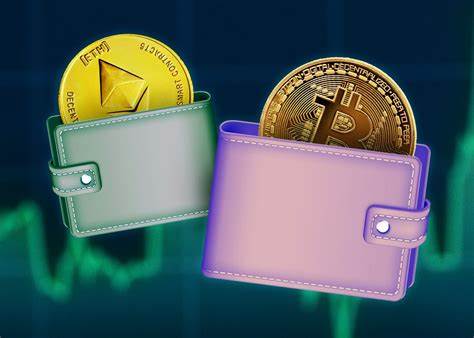
The world of crypto trading is like driving through a cyber jungle—volatile, loud, and with much potential and pricey pitfalls. If you’re interested in the possibilities but intimidated by the danger, don’t worry—you’re not alone.
Trading in cryptocurrencies does not have to drive you crazy. Using the right attitude, equipment, and strategy, you can sensibly trade this market. You will learn step by step from this book how to start trading cryptocurrencies in a clear, confident, and cautious manner—without losing your mind or money.
Read more about crypto: How To Use Crypto Business In Dubai – Here’s What You Need To Know

Let’s Learn Trading Without Losing
Mind Or Money…..
the STEP-BY-STEP guide on safe CRYPTO trading
- Understand The Basics
Don’t jump in until you have a good idea of what you’re doing. Cryptocurrency isn’t “internet money.” It’s rooted in blockchain technology, an open, digital bookkeeping system that records trades publicly and in a secure manner.
There are two main types of crypto trading:
• Spot Trading: Buying and selling crypto at current market prices.
• Derivatives Trading: Speculating on price movements using derivatives like futures (best suited for advanced traders).
Start by learning the top cryptocurrencies such as Bitcoin (BTC), Ethereum (ETH), and stablecoins USDT and USDC. Discover what they are used for, how they work, and why people love them.
2. Set clear Goals and Expectations
If you’re entering crypto to “get rich quick,” take a step back. The most sustainable way to approach trading is with realistic goals. Decide whether you’re in it for:
- Short-term gains (requires constant trading and high risk)
- Long-term investment (less risk but requires patience)
Whatever you decide, write down your financial goals. How much are you willing to invest? What loss percentage can you tolerate? Having these known in advance keeps emotions at bay later.
3. Choose the right platform
Choose a suitable and regulated cryptocurrency exchange that best meets your needs. Some of the most secure platforms in markets like the UAE are:
Look for features like user-friendly interfaces, strong security features, fair fees, and responsive customer support.
Pro tip: Avoid exchanges that promise unrealistic returns or have ambiguous legal information.
4. Start Small
Don’t invest all your lifetime savings in crypto on day one. Invest a small amount you can afford to lose. Even experienced traders test with small capital first before scaling up.
Invest the time
•Knowing how market orders and limit orders work.
•Watching patterns of prices.
•Watching your chosen coin’s reaction to news or market movement.
This is your practice area, mistakes are included but for a small amount of money, they will not be expensive ones.
5. Focus on risk management
Preservation of capital is as important to professional traders as profits.
This is how you safeguard yourself:
• Implement stop-loss orders to sell a coin automatically when it drops to a specific price.
• Risk no more than 1–2% of your entire capital on any one trade.
• Diversify: Don’t put all of your capital into one currency.
• Don’t employ margin trading or leverage, at least not to start. These both amplify gains and losses.
6. Educate yourself daily
Crypto keeps evolving. New technologies, rules, and market movements occur almost daily. Make it a practice to keep current with:
- Cryptocurrency news websites like CoinDesk, CoinTelegraph, or The Block
- YouTube channels operated by well-known analysts
- Trend podcasts and expert interviews
Don’t underestimate the use of Twitter and Reddit (and particularly subreddits such as r/CryptoCurrency) for real-time insights—but always check facts before acting.
7. Use technical tools – but keep it simple
Technical analysis (chart-reading) doesn’t need to be scary, and you don’t have to be a numerical wizard. Start here with these beginner tools:
- Support and Resistance Levels: Levels where the price will want to drop or rebound.
- Moving Averages: Assists in determining trends.
- Relative Strength Index (RSI): Specifies if a coin is overbought or oversold.
Free sites such as TradingView make it easy to utilize these tools. But don’t get too excited tools are only half the story, not a crystal ball
8. Don’t follow the crowd blindly
Cryptocurrency markets are heavily influenced by fear and hype. If a coin is trending, it can seem like a “sure win,” but quite definitely the rally has already topped.
Don’t let FOMO (Fear of Missing Out) get the better of you. The optimal time to invest is when no one’s discussing it, not when everyone’s discussing it on social media.
If you do not know the project inside and out, don’t invest in it. That’s a simple rule.
9. Practice Emotional discipline
You will notice green days (profit) and red days (loss). The secret is not reacting emotionally to such things as:
• Panic-selling during a dip
• Over-buying during a pump
- Revenge trading after losing
Maintain a trading journal in which you record your feelings, decisions, and results. Through this practice, you are able to identify patterns of behavior and refine your strategy further.
10. Prioritize security above all
Crypto is not about trading, it’s about keeping your money secure. Never keep a lot of money in an exchange wallet.
Use a personal wallet:

- Hot wallets (software wallets such as MetaMask or Trust Wallet) are online but easy.
- Offline hardware wallets like Ledger or Trezor are safer and much better for larger amounts.
Always enable 2-factor authentication (2FA) and never share your recovery words with anyone. Be cautious of phishing attacks—only visit official sites and links.
11. Know the Legal and Tax aspects
Depending on where you are, trading crypto can have legal and tax implications. Some governments require you to:
- Report gains from cryptocurrency transactions.
- Register with financial authorities if trading professionally.
- Use approved exchanges that follow local compliance.
Verify with your local law or a financial advisor to be sure. Compliance will enable you to trade without any worries.
12. Learn from Mistakes – They’re part of the journey
All successful traders have a tale about the time they lost money on a losing trade or failed to take a winning trade. What distinguishes them is not luck—it’s persistence and self-reflection.
If a trade goes against you, don’t beat yourself up.
Ask yourself instead:
• What did I miss?
• Did I stick to my own rules?
• What can I improve next time?
Turn every error into tuition in the school of experience.
13. Don’t quit your day job – yet
It is always tempting to fantasize about becoming a full-time crypto trader, but your primary source of income must be maintained stable at least until the moment you achieve years of good performance and create a clear plan.
Use trading as a side income source first. Allow it to develop on its own time. In doing so, it will also free you from pressure so that you would not make impulsive decisions.
Read also: Best Banks in Dubai – to Buy, Sell, and Trade Crypto Securely
Conclusion: Trade with intention, not emotion
Cryptocurrency trading isn’t gambling on luck. It’s learning a system, familiarizing yourself with the landscape, and keeping your feet on the ground in how you approach it. There’s no magic formula—but add patience, discipline, and learning, and you can trade with confidence.
So, take a deep breath, learn a little each day, and step forward one trade at a time. You’ve got this.
